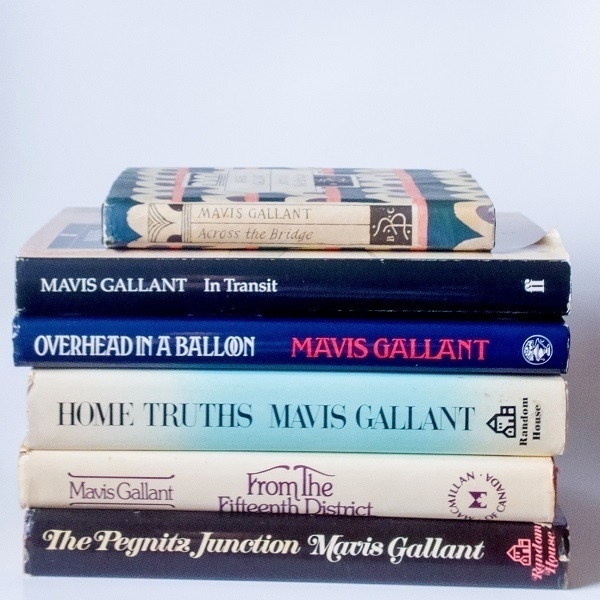Mavis Gallant

I’d become a great admirer of the short stories of Sylvia Townsend Warner (of Lolly Willowes fame) and read something on-line mentioning that the only other female author whose short fiction had been featured as often in the pages of The New Yorker over the same time-frame had been Mavis Gallant. Not at all familiar with the latter’s work, I ordered a copy of the 2004 reprint of her Selected Stories and found that although I loved her writing too, I took an irrational dislike to the physical book: a cumbersome 900+ page paperback. I felt it was the wrong format for her densely concentrated writing - like an off-puttingly super-sized portion of some very rich and calorific confection.
I’ve since accumulated half a dozen separate hardback copies of her short fiction (as pictured above), from The Pegnitz Junction (1973) to Across the Bridge (1993). For me these have been much more digestible servings of her prose. How to describe her writing? Here’s a thumbnail sketch of it by critic Hilary Bailey, as quoted on the rear dust jacket flap of Overhead in a Balloon (1987): “Brilliant, dryly accurate, impeccable detail, knowing and terrifyingly neutral. Mavis Gallant’s stories seem to tell us that all are victims of history and each other, all are out of synch with their own times and each other, all are strangers where they live and strangers to each other”.
Gallant was a Canadian who spent most of her writing life in Paris. Exile, displacement & alienation are prominent and recurring ingredients in her work, but nearly always well-blended with other flavours. Her characters are fully-rounded: good people one can’t love because of their exasperating flaws; awful people one can’t hate on account of their saving graces. How she can stealthily fold so much detail, plot & characterization into so few pages is a marvel. She strung some of her stories into inter-related sequences which collectively come across as novels in all but name - albeit with all the surplus padding removed. For example, the quartet of tales “A Recollection”, “Rue de Lille”, “The Colonel’s Child” and “Lena” jointly pack a tremendous novelistic punch into no more than thirty-seven pages.
As good as she was, there are some duds among her tales. She could be very funny but wasn’t really a humourist - a few efforts at lighter comedy fall a little short (I’m thinking of the ‘Grippes and Poche’ pieces). She was accomplished at extracting strangeness from the everyday, but also tried her hand at some deliberately surreal vignettes (such as the title piece of From the Fifteenth District) which didn’t work terribly well. And even now and again in her customary mode, the point of this or that subtly-realised slice of life might elude the frustrated reader. Those relative failures, however, are well-outnumbered by her many successes.